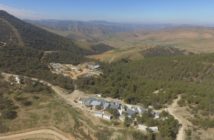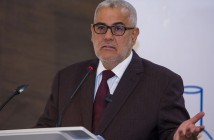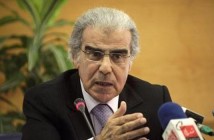
by Assad Abboud – RIYADH (AFP)
Saudi Crown Prince Sultan bin Abdul Aziz has died, a palace announcement on state television said on Saturday, throwing his brother Prince Nayef into line to succeed King Abdullah as leader of the key oil producer amid turmoil in the Arab world.
The crown prince, aged around 86, who had served as the kingdom’s defence chief for nearly five decades, had been in the United States since mid-June for medical treatment. He was operated on in July but no information had been released on his health since then.
A half brother of King Abdullah, Sultan had spent long periods abroad for medical treatment.
A Western diplomat, speaking to AFP on condition of anonymity, said Sultan had been hooked up to life support systems at New York Presbyterian hospital and was declared “clinically dead” more than a month ago.
Sultan died while the monarch himself, 87, remains in hospital in Riyadh, a week after he had an operation on his back. State television aired footage Wednesday of King Abdullah in hospital as he received royal dignitaries.
The king was operated on in November for a debilitating herniated disc complicated by a haematoma, or blood clot, that put pressure on his spine and underwent further surgery to repair several vertebrae.
The latest operation was aimed at repairing a slackening ligament near the third vertebra. State media said the surgery was successful.
The advanced age and failing health of the king and of his half-brothers in line to succeed him has raised concerns about the future of the oil kingpin in the face of the turmoil rocking the Arab world.
The Al-Saud family has ruled Saudi Arabia ever since the kingdom’s establishment in 1932 and under its rules of succession the throne passes in turn to the sons of its founder Abdul Aziz, all of whom are now elderly.
Prince Nayef, who becomes crown prince on the death of Prince Sultan, is 78. Another half-brother of King Abdullah, he holds the interior portfolio.
Prince Nayef was named second deputy prime minister in March 2009, filling a potential void in the succession lineup, at a time when Arab regimes are struggling with unprecedented uprisings that have so far unseated three autocratic leaders.
Except for a few demonstrations by the Shiite minority in eastern Saudi Arabia, the Sunni-dominated absolute monarchy has been largely spared the wave of pro-democracy protests that has swept other Arab countries.
But it has felt increasingly threatened by the growing influence in the region of its Shiite arch-rival Iran, which it accuses of sowing sectarian tensions.
In March, Riyadh spearheaded a military intervention by Sunni-ruled Gulf states in Bahrain as its Sunni ruling family crushed month-long pro-democracy protests led by the island state’s Shiite majority.
Prince Sultan’s funeral will be held on Tuesday after his body has been repatriated from the United States.
Sultan had battled colon cancer since 2004, going to Switzerland and then the United States to seek treatment, according to diplomats.
His long illness and absences abroad held up important government decisions while raising questions about how the monarchy would take shape in the next generation of the Al-Saud family.
Then king Faisal assigned him the defence portfolio in 1962, and he became one of a handful of key princes, including Abdullah and Sultan’s full brothers Prince Nayef and Prince Salman, who have run Saudi Arabia for four decades.
In 1982, his full brother king Fahd appointed Sultan second deputy prime minister, making him second in line to the succession after then-crown prince Abdullah.






